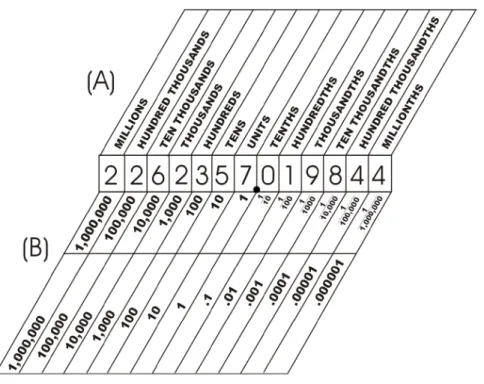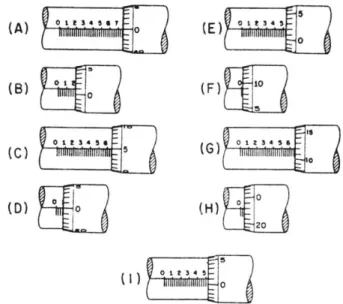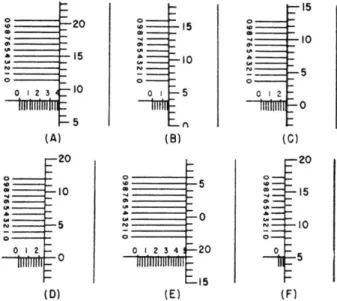DISTRIBUTION STATEMENT A: Approved for public release; distribution is unlimited.
NONRESIDENT
TRAINING
COURSE
Mathematics, Basic Math and
Algebra
DISTRIBUTION STATEMENT A: Approved for public release; distribution is unlimited.
PREFACE
About this course:
This is a self-study course. By studying this course, you can improve your professional/military knowledge,
as well as prepare for the Navywide advancement-in-rate examination. It contains subject matter supporting
day-to-day occupational knowledge and skill requirements and includes text, tables, and illustrations to help
you understand the information.
Any errata for this course can be found at https://www.advancement.cnet.navy.mil under Products.
History of the course:
• June 1980: Original edition released.
• June 1985: Reprinted.
• Apr 2003: Administrative update released. Technical content was not reviewed or revised.
NOTE
In the assignment portion of this course, a question with no answer choices given is a True/False
question. For True/False questions, answer 1 for True and 2 for False.
Published by
NAVAL EDUCATION AND TRAINING
PROFESSIONAL DEVELOPMENT
AND TECHNOLOGY CENTER
https://www.cnet.navy.mil/netpdtc
POINTS OF CONTACT
ADDRESS
• E-mail:
fleetservices@cnet.navy.mil
• Phone:
Toll free: (877) 264-8583
Comm: (850) 452-1511/1181/1859
DSN: 922-1511/1181/1859
FAX: (850) 452-1370
COMMANDING OFFICER
NETPDTC N331
6490 SAUFLEY FIELD ROAD
PENSACOLA FL 32559-5000
NAVSUP Logistics Tracking Number
0504-LP-026-7940
CONTENTS
CHAPTER
PAGE
1 Number
systems and sets ...
1
2 Positive
integers ...
7
3 Signed
numbers...
19
4 Common
fractions...
28
5 Decimals...
45
6 Percentage and measurement ...
55
7 Exponents and radicals...
65
8 Logarithms and the slide rule ...
80
9 Fundamentals of algebra ...
98
10 Factoring
polynomials...
111
11 Linear equations in one variable ...
120
12 Linear equations in two variables...
130
13 Ratio, proportion, and variation ...
141
14 Dependence, functions, and formulas ...
151
15 Complex
numbers ...
158
16 Quadratic equations in one variable ...
167
17 Plane
figures...
181
18 Geometric constructions and solid figures ...
190
19 Numerical
trigonometry ...
199
APPENDIX
I Squares, cubes, square roots, cube roots, logarithms, and reciprocals of numbers… 210
II Natural sines, cosines, and tangents of angles from 0˚ to 90˚ ...
213
III Mathematical
symbols...
219
IV Weights
and
measures ...
220
V Formulas...
221
INDEX
... INDEX 222
MATHEMATICS, VOLUME 1
Figure 5-1.–Place values including decimals.
Figure 5-2.–Conversion of a decimal fraction to shortened form.
are zeros in the denominator of the fractional form.
Figure 5-3 shows the fraction 24358 and
100000 what is meant when it is changed to the
short-ened form. This figure is presented to show
further that each digit of a decimal fraction holds a certain position in the digit sequence and has a particular value.
By the fundamental rule of fractions, it
should be clear that 5 =50 = 500. Writing
10 100 1000
the same values in the shortened way, we have 0.5 = 0.50 = 0.500. In other words, the value of a decimal is not changed by annexing zeros at the right-hand end of the number. This is not
46
Figure 5-3.–Steps in the conversion of a decimal fraction to shortened form. true of whole numbers. Thus, 0.3, 0.30, and 0.300 are equal but 3, 30, and 300 are not equal. Also notice that zeros directly after the
deci-mal point do change values. Thus 0.3 is not
equal to either 0.03 or 0.003.
Decimals such as 0.125 are frequently seen. Although the 0 on the left of the decimal point is not required, it is often helpful. This is par-ticularlytrue in an expression such as 32 ÷ 0.1. In this expression, the lower dot of the division symbol must not be crowded against the decimal point; the 0 serves as an effective spacer. If any doubt exists concerning the clarity of an expression such as .125, it should be written as 0.125.
MATHEMATICS. VOLUME 1
0.200 0.025 0.002 0.227
Figure 6-1.–(A) Parts of a micrometer; (B) micrometer scales.
of an inch. Multiplying times 0.025 inch, we
find that each marking on the thimble repre-sents 0.001 inch.
0.025 inch since 401 is equal to 0.025. The
sleeve has 40 markings to the inch. Thus each space between the markings on the sleeve is also 0.025 inch. Since 4 such spaces are 0.1 inch (that is, 4 x 0.025), every fourth mark is labeled in tenths of an inch for convenience in reading. Thus, 4 marks equal 0.1 inch, 8 marks equal 0.2 inch, 12 marks equal 0.3 inch, etc. To enable measurement of a partial turn, the beveled edge of the thimble is divided into
25 equal parts. Thus each marking on the
thimble is 1 of a complete turn, or 1 of 1
25 25 40
1 25
READING THE MICROMETER
It is sometimes convenient when learning to read a micrometer to writedown the component
62
parts of the measurement as read on the scales and then to add them. For example, in figure 6-1 (B) there are two major divisions visible
(0.2 inch). One minor division is showing
clearly (0.025 inch). The marking on the thimble nearest the horizontal or index line of the sleeve is the second marking (0.002 inch). Adding these parts, we have
Thus, the reading is 0.227 inch. As explained previously, this is read verbally as "two hun-dred twenty-seven thousandths." A more skill-ful method of reading the scales is to read all digits as thousandths directly and to do any adding mentally. Thus, we read the major divi-sion on the scale as “two hundred thousandths” and the minor division is added on mentally. The mental process for the above setting then would be “two hundred twenty-five; two hundred twenty-seven thousandths.”
Practice problems:
1. Read each of the micrometer settings shown in figure 6-2.
MATHEMATICS, VOLUME 1 The foregoing example could be followed
through for any distance between markings. Suppose the 0 mark fell seven tenths of the dis-tance between ruler markings. It would take seven vernier markings, a loss of one-hundredth of an inch each time, to bring the marks in line at 7 on the vernier.
The vernier principle may be used to get fine linear readings, angular readings, etc. The principle is always the same. The vernier has one more marking than the number of mark-ings on an equal space of the conventional scale of the measuring instrument. For example, the vernier caliper (fig. 6-5) has 25 markings on the vernier for 24 on the caliper scale. The caliper is marked off to read to fortieths (0.025) of an inch, and the vernier extends the accuracy to a thousandth of an inch. 0.3000 0.0750 0.0080 0.0004 0.3834
Figure 6-5.–A vernier caliper. Vernier Micrometer
By adding a vernier to the micrometer, it is possible to read accurately to one ten-thousandth of an inch. The vernier markings are on the sleeve of the micrometer and are parallel to the thimble markings. There are 10 divisions on the vernier that occupy the same space as 9 divisions on the thimble. Since a thimble space is one thousandth of an inch, a vernier space is
1
of 9 inch, or 9 inch. It is 1 inch
10 1000 10000 10000
less than a thimble space. Thus, as in the pre-ceding explanation of verniers, it is possible to read the nearest ten-thousandth of an inch by reading the vernier digit whose marking coin-cides with a thimble marking.
In figure 6-6 (A), the last major division showing fully on the sleeve index is 3. The third minor division is the last mark clearly
64
showing (0.075). The thimble division nearest and below the index is the 8 (0.008). The ver-nier marking that matches a thimble marking is the fourth (0.0004). Adding them all together, we have,
The reading is 0.3834 inch. With practice these readings can be made directly from the microm-eter, without writing the partial readings.
Figure 6-6.–Vernier micrometer settings. Practice problems:
1. Read the micrometer settings in figure 6-6. Answers:
1. (A) See the foregoing example.
(B) 0.1539 (E) 0.4690
(C) 0.2507 (F) 0.0552


